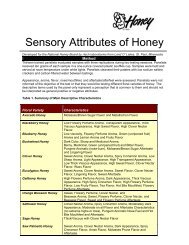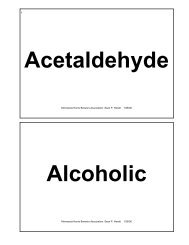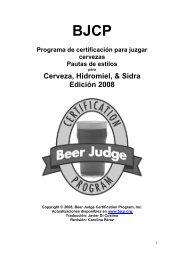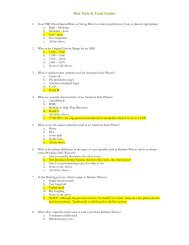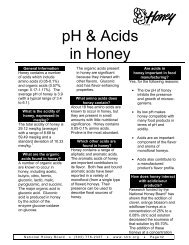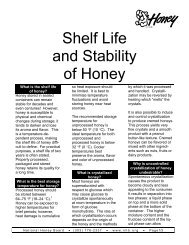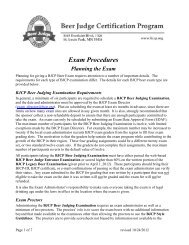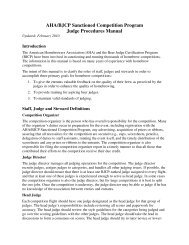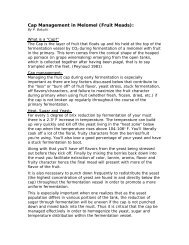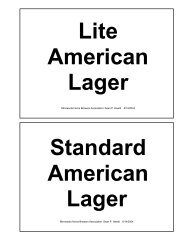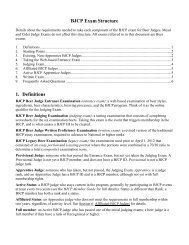You also want an ePaper? Increase the reach of your titles
YUMPU automatically turns print PDFs into web optimized ePapers that Google loves.
86 T Entrants may contact the judge, the competition director, or their <strong>BJCP</strong>Regional Representative if they are dissatisfied with any aspect of theirscoresheets.87 T When your flight has finished, you should avoid having conversations that mightdistract other judges who have not yet finished their flights.88 F When your flight has finished, it is OK to visit other flights still in progress to seehow beers you have entered are faring.89 T Because it may have been entered by a person in the room, it is polite to refrainfrom publicly deriding a “problem” beer that you have scored during acompetition.90 T Judges from outside the table should not be consulted on a beer unless thejudges at the table cannot reach a consensus score, and then only if they all agreeto the consultation.The Remainder of the Written PortionThe remainder of the written portion of the exam still consists of nine free-form essay questions, eachworth 10 points. They will be a combination of “Style” questions and “Troubleshooting” questions,based on the idea that knowledge of brewing techniques is as important to a beer judge as knowledge ofbeer styles.The Style Related QuestionsFor the style-related questions, the allocation of the 10 points available for each answer is explicit in theexam question. The questions are now of the form:S0. For each of the three styles style-1, style-2, and style-3, provide a statement describing the styles aswell as the differences and similarities between them by addressing each of the following topics:6points2points1 pointDescribe the aroma, appearance, flavor, and mouthfeel of each style as in the <strong>BJCP</strong> Style<strong>Guide</strong>lines.Identify at least one aspect of the ingredients (malts, hops, water chemistry) or backgroundinformation (history, fermentation techniques and conditions, or serving methods) thatdistinguishes each style.For each of the styles, name at least one classic commercial example as listed in the <strong>BJCP</strong>Style <strong>Guide</strong>lines.1 point Describe the similarities and differences between the three styles.The styles groupings for question S0 are drawn from the following list:Style-1 Style-2 Style-3American Amber Ale American Pale Ale California Common BeerAmerican Amber Ale American Brown Ale American Pale AleAmerican Amber Ale American Pale Ale California Common Beer25



